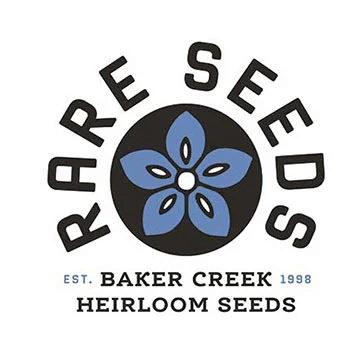So if you live in Northern Illinois, today is a really good day to get yourself started. Map out where you could make your garden in a sunny spot in your yard, or plan on what you could do in containers on a deck or balcony. Then, decide what your family will eat. Trust me, those seed catalogs will make you want to grow 200 different kinds of tomatoes, 400 kinds of peppers, and then some! Once you narrow it down, order your seeds. Here are the sources I use for my seeds:
And yes, we've actually grown this type of watermelon! It's the only watermelon I'll eat - Moon and Stars. It really is as pretty as the picture.
A great resource for some really rare varieties. This is where we order our pole beans from, among others. I especially love the fact that they have very similar growing conditions to our own backyard, so I don't have to worry about whether or not stuff will really grow here.
This is where we get our seed potatoes. We've grown red, white and blue potatoes successfully for 4 years now. This year, we're going to try some new varieties. We're also ordering some clover from them. This will not only help feed the bunnies, but also replenish the soil in one of our beds that's been used pretty heavily for the last few years.
If you are a first time gardener and you have small kidlets (mine are teenagers now, and seasoned gardeners), here are some plants I would HIGHLY RECOMMEND growing:
- Sunflowers - great for measuring both the plant and your kiddo (take photos of your little one standing next to a Mammoth Sunflower - what a memory); they also attract lots of bees for pollination which you need to grow your other plants.
- Pole beans - plant these in between your sunflowers and watch them climb. We use Hidatsa Shield Figure beans from SSE - they are endangered, and are probably the beans eaten by Lewis and Clark on their grand expedition when they hung out with the Mandans over the winter. Great history lesson!
- Pumpkins - generally easy to grow, and once they get going in July, they REALLY get going! You can compare the size of your child's head to the leaves, measure the pumpkins as they grow, use describing words (adjectives) to tell the colors of the fruit and flowers. All kinds of educational fun!
Here's a hint of what's coming next - start saving your milk cartons/jugs (well washed and rinsed), egg cartons (plastic and cardboard are both ok), and newspapers. Once those seeds come in, you'll need a place to put them. That's what's next - and we'll tackle that next weekend!
Have fun with your seed catalogs today!




No comments:
Post a Comment